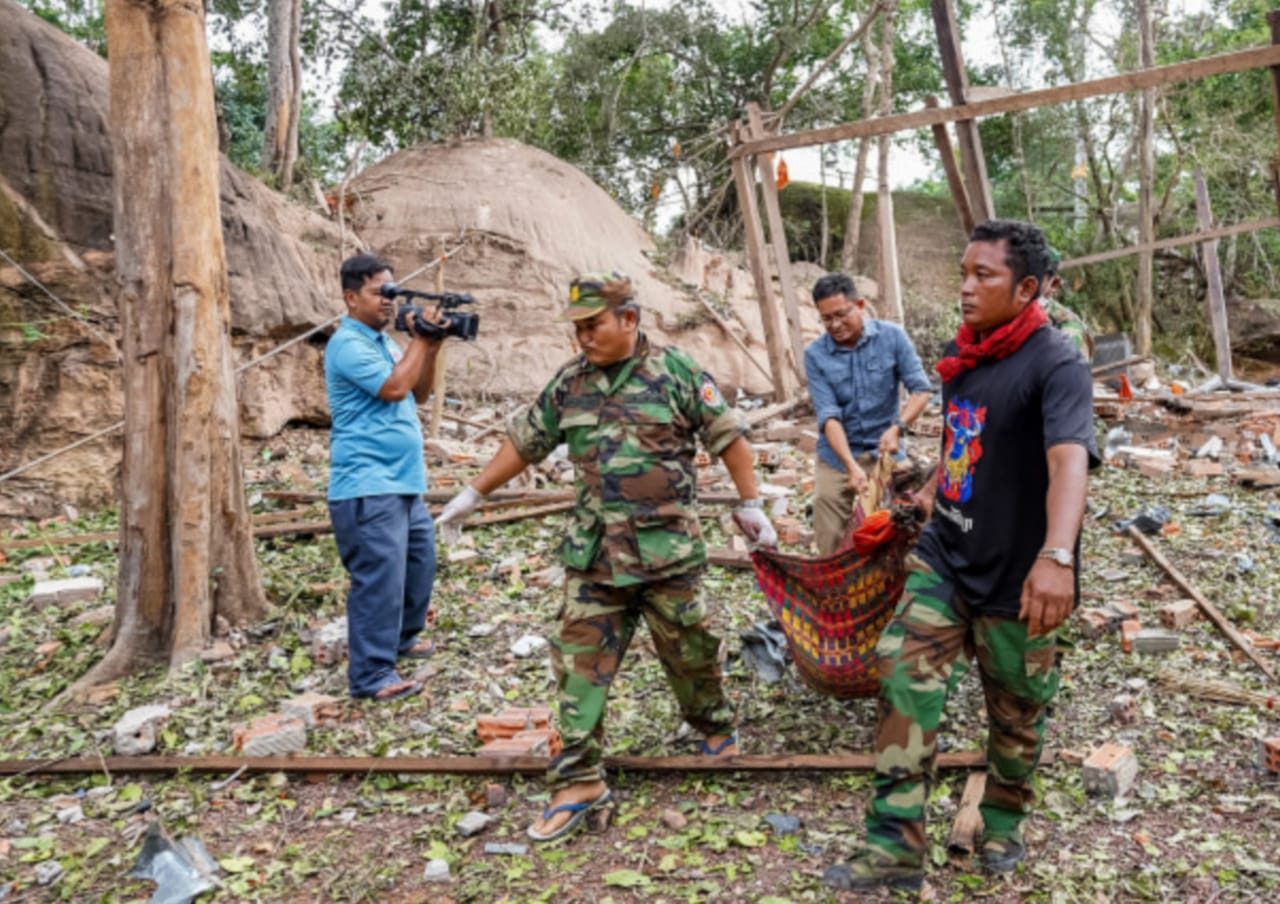
Border tensions between Thailand and Cambodia escalated into deadly clashes this week, forcing more than 170,000 civilians from their homes while raising urgent concerns of a prolonged regional crisis. As fighting entered a third day on Saturday, the confirmed death toll surged to at least 32, including many civilians, with hundreds more wounded and infrastructure on both sides battered.
The epicentre of the violence remains around the ancient Hindu temples of Preah Vihear and Ta Muen Thom, longstanding symbols of national pride and focal points in a border dispute dating back over a century. Heavy exchanges of artillery and rocket fire have transformed once-peaceful villages into zones of chaos, as frightened residents evacuate under a rain of shells.
Thailand’s Ministry of Public Health reported more than 138,000 people have now evacuated border areas, seeking safety in makeshift shelters, schools, and gymnasiums across the provinces of Surin and Sisaket. Cambodian authorities estimate that at least 35,000 people have fled villages in Oddar Meanchey and neighbouring provinces, with many crowding into rural temples or hastily erected camps, unsure when or if they will return.
“We just heard, boom, boom. We grabbed our children, packed a few clothes, and ran to the car,” said Pornpan Sooksai, a seamstress from Surin, cradling her cats as she waited in a school-turned-shelter. Across the border in Cambodia, families describe risking their lives to return for livestock and possessions amid continued shelling.
Political rhetoric has also intensified. Each capital blames the other for initiating attacks: Thailand’s acting Prime Minister Phumtham Wechayachai accused Cambodia of war crimes after shells struck a hospital, while Phnom Penh insists it responded defensively, lacking the military capacity for an offensive push.
The United Nations Security Council met urgently in New York on Friday, with all fifteen members calling for restraint and a peaceful solution. Malaysia, serving as current ASEAN chair, has offered to mediate and urged both countries to implement a ceasefire. Cambodia’s UN envoy, Chhea Keo, emphasized Phnom Penh’s willingness for “an immediate, unconditional truce and peaceful dispute resolution.”
Yet, on the ground, the situation remains fraught. Both armies accuse each other of targeting civilian infrastructure schools, hospitals, and pagodas. Observers note the escalation began with landmine blasts earlier in the week, which wounded several Thai soldiers, prompting tit-for-tat diplomatic expulsions and restrictions.
The roots of conflict run deep. The 11th-century Preah Vihear temple, perched atop the Dangrek mountains, was granted to Cambodia by an international court in 1962, but Thailand contests roughly 4.6 square kilometres of adjoining land. Sporadic violence has erupted in the past, most notably the flare-up in 2011, but this year’s displacement dwarfs previous crises.
For now, families on both sides wait in limbo. In Cambodia, elders like Veng Chin, 74, plead for a negotiated settlement: “So that I can return to my home and work on my farm.” For many, immediate needs like food, shelter, and the safety of loved ones have overtaken concern for ancient borderlines.
Southeast Asia’s regional leadership and the broader international community are united in an urgent demand for dialogue and de-escalation. Yet, with trust in short supply and nationalist rhetoric rising, lasting peace appears precariously out of reach.
As night falls over the battered border, exhausted refugees cling to hope that leaders will heed calls for restraint before more families are forced to flee, and before the human toll climbs even higher.